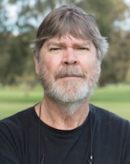The Godfather: Peter Corris on revitalisation
 Entering its fifth year of operation, the Mount Pleasant Revitalisation Centre is set on a five-hectare site ten kilometres from the town of that name among rolling hills, vineyards, secondary-growth forest and grassland in the southern highlands of NSW. The centre was established and largely maintained by the Henry Lowenstein Foundation, the creation of the late millionaire industrialist.
Entering its fifth year of operation, the Mount Pleasant Revitalisation Centre is set on a five-hectare site ten kilometres from the town of that name among rolling hills, vineyards, secondary-growth forest and grassland in the southern highlands of NSW. The centre was established and largely maintained by the Henry Lowenstein Foundation, the creation of the late millionaire industrialist.
Approximately 60 patients are resident for an average stay of one calendar month. Fifty per cent of patients are male and 50 per cent female and this ratio is constant for doctors, nurses and all ancillary staff. Headship of the management group circulates among the 12 members, with men and women alternating in the role and holding office for only three years.
The centre is dedicated to restoring health and vitality to people who have experienced a decline in their wellbeing through illness, mental or physical, trauma or bereavement. To this end the centre houses doctors in fields such as psychiatry, ophthalmology, rheumatology, endocrinology, and dermatology – along with dentists, podiatrists, dieticians, physiotherapists and audiologists. Facilities include a swimming pool, sauna and spa, a nine-hole golf course, tennis courts with a retractable roof, a gymnasium, a music room and an artist’s studio, as well as a croquet lawn and a cycling track. Pay television and internet services are provided in every suite and there are also an extensive library, a fully equipped scientific laboratory and several greenhouses.
Solar panels provide 25 per cent of the centre’s energy needs and a further ten per cent is afforded by appropriate treatment of waste material. All buildings are constructed and sited so as to minimise energy requirements and the centre has entered into a partnership with the University of New South Wales to devise materials and systems to eventually make the centre energy self-sufficient, with a consequent lowering of all costs.
Patients are encouraged to undertake excursions to such local enterprises as vineyards, apiaries, orchards and wind farms. Visiting times are negotiated among patients, clinicians and visitors.
Charges are surprisingly low, with several places reserved for pensioners whose welfare payments cover all costs. A pharmacy provides medications and arrangements with Medicare and many health funds are in place to minimise charges for all services like pathology and minor surgery.
No discrimination is exercised regarding race, religion, creed or sexual orientation. Facilities for religious observance and dietary customs are provided.
Waiting lists are understandably long and admittance is given on the basis of need and the likelihood that treatment can lead to advancement in the management of various conditions.
Doctors work pro bono at the centre and a majority stand by to repeat their residencies when circumstances permit and opportunities arise. Several books and a number of magazine and newspaper articles have been written by patients and workers at the centre while medical and other professionals have contributed many peer-reviewed papers to scientific and learned journals.
Follow-up surveys and analyses have been conducted with over 70 per cent of patients reporting a return to, or a heightening of, their enthusiasm for life, while statistics for no improvement in a positive direction, a deterioration or serious malfunction remain significantly below those for the general population.
The Mount Pleasant Centre for Revitalisation of course does not exist but, as the Beach Boys sang, ‘Wouldn’t it be Nice?’







